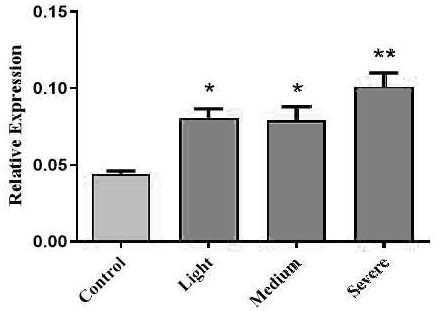Application of PDIA6 in preparation of medicine for treating and repairing spinal cord injury
A spinal cord injury and drug technology, applied in the field of biomedicine, can solve problems such as unclear, achieve obvious effects, promote repair, and promote the growth of neurites
- Summary
- Abstract
- Description
- Claims
- Application Information
AI Technical Summary
Problems solved by technology
Method used
Image
Examples
Embodiment 1
[0051] Example 1 Preparation of plasmids and constructs
[0052] (1) PDIA6 and spastin sequences (available through commonly used databases such as Pub, ed or Uniprot) were obtained for cDNA preparation, respectively, which were then cloned into pEGFP-C1 (Clontech, CA, USA), pGEX-5x-3 (Amer - shamPharmacia Biotech, NJ, USA) and pCMV-Tag2 (Stratagene, CA, USA) vectors, and the constructed constructs were confirmed by DNA sequencing;
[0053] (2) Pull-down analysis using glutathione S-transferase (GST): Spinal cord tissue sections were ground and lysed, then GST-agarose beads (Invitrogen, CA, USA) were rinsed and mixed with lysis buffer at 4 After incubation for 1 h at 4°C, centrifugation was performed at 1000 g for 10 minutes. The supernatant was then collected and the above steps were repeated once. The appropriate bead fusion protein was then added to the spinal cord tissue and the samples were incubated overnight at 4°C. After centrifugation at 1000 g for 5 minutes at 4°C...
Embodiment 2
[0058] Example 2 Study on the role of PDIA6 in the repair of spinal cord injury
[0059] First, the construction of the rat SCI model includes the following steps:
[0060] The Sprague-Dawley (SD) rats used in the experiment were purchased from the Laboratory Animal Center of Sun Yat-Sen University. The rats were housed individually in a facility at 25 ± 3 °C and provided with regular food and water. Specifically, the following steps were included:
[0061] (1) SD rats were anesthetized by intraperitoneal injection of 10% chloral hydrate (0.35 mL / 100 g body weight), after which a 2.5 cm longitudinal dorsal incision was made to expose the T9-11 spinous process and lamina;
[0062] (2) The entire T10 lamina is removed, and the exposed area of the spine is about 2.5mm × 3mm;
[0063] (3) Use a stabilizer to fix the T10 section bilaterally, and set the nitrogen tank to control the impact head to 18psi or 124kPa. Load a U-shaped stabilizer with a rat onto the platform of the Lo...
Embodiment 3
[0071] Example 3 Study on the interaction between PDIA6 and spastin
[0072] (1) Construct prokaryotic expression vector plasmids of GST-Spastin and GST-PDIA6 and transform them into BL21 competent cells;
[0073] (2) Pick a single clone and culture it in LB medium until the measured OD value is 0.4-0.6, add IPTG, and induce overnight in a shaker at 25°C;
[0074] (3) After the induction, the bacterial solution was centrifuged and lysed, and then the fusion protein was purified by GST beads, electrophoresed and stained with Coomassie brilliant blue.
[0075] Test results such as Figure 4 shown. The results showed that the molecular weight of the purified fusion protein was in line with expectations.
[0076] Then, using the prepared rat brain lysate, set aside an appropriate amount of Input as a positive control, and use GSTbeads to remove non-specific proteins, and add the successfully purified fusion expression protein of GST-Spastin and GST-PDIA6 to the brain lysate for...
PUM
 Login to View More
Login to View More Abstract
Description
Claims
Application Information
 Login to View More
Login to View More - R&D
- Intellectual Property
- Life Sciences
- Materials
- Tech Scout
- Unparalleled Data Quality
- Higher Quality Content
- 60% Fewer Hallucinations
Browse by: Latest US Patents, China's latest patents, Technical Efficacy Thesaurus, Application Domain, Technology Topic, Popular Technical Reports.
© 2025 PatSnap. All rights reserved.Legal|Privacy policy|Modern Slavery Act Transparency Statement|Sitemap|About US| Contact US: help@patsnap.com



